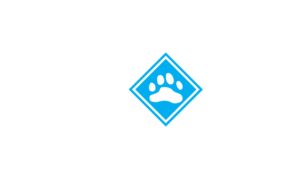
Over 60% of the Catamount Trail is located on public conserved lands. This includes over 100 miles of trail within the Green Mountain National Forest, Vermont State Forests or Vermont State Parks. We’ve asked a few of the land managers who work closely with the CTA to share their thoughts on nordic and backcountry ski use on the lands they are responsible for. Over the course of the next few months, we’ll be sharing their responses. Stay tuned for responses from other land managers in upcoming newsletters and online.
What is your job title and can you give a brief description of what you do?
Stewardship Forester – Brief is tough, as my job is very complex. But, in a nutshell, I guide the management of approximately 60,000 acres of state land in the northwest part of Vermont. Much of my time is spent managing Camel’s Hump State Park, which encompasses about 24,000 acres. Duties include long range planning, fostering partnerships with organizations such as the CTA, supervising five state employees, responsibility for various land management programs such as recreation, vegetation management, road infrastructure construction and repairs, forest assessments, wildlife habitats enhancements, etc.
How long have you been in your position?
I have worked for VT FP&R for nearly 36 years. I started out in January of 1978 as a Forestry Aide A (pretty much the lowest of the low back then; this position does not exist now), and have worked my way up the ladder little by little.
The USFS and State of Vermont have been hosting cross-country skiers for decades. Do you think the number of backcountry/cross country users on public lands has increased? Decreased? Stayed the same?
Cross-country and back-country ski use has definitely increased over the past 35 plus years, by quite a bit.
What trends are you seeing?
Much more off trail use, and much more trail and glade cutting without permission.
How do you measure/gauge change in use?
Personal observation, word of mouth from users, and partners.
Are you encountering more or different challenges with the technological advances in backcountry equipment?
Yes we are. People have a tendency to go beyond their inherent ability, trusting the technology more than common sense. People go more places utilizing better equipment; sometimes putting themselves and others at risk.
What are some ways you currently work to manage this recreational use on the lands you manage?
We should be doing a better job at this, but it is a big challenge to know how to approach proper management techniques that would be effective. We do not address many of the issues that have come with expanded numbers of users and expanded areas of use. This is one area we need assistance from partners on.
There are many managed cross-country ski trails on public lands. Generally these are narrow corridors for touring. What do you think of the idea of planned trimming/glading in designated areas of the backcountry?
I am hesitant to embrace this change, but do recognize the allure of this activity. Users need to understand that there are impacts from any recreational development, and there are many factors that need to be considered. Management of state land is very complex; we need to look at this type of use very carefully.
Do you think there is economic value in greater promotion of backcountry skiing on public lands in a region dependent on tourism? And could our public lands handle more use for backcountry skiing?
Yes, and yes, as long as it is done well.
Are you aware of good models or examples in other parts of the country or world that we might employ here in Vermont to better manage backcountry skiing on public lands?
No.
What are the ecological impacts of the “trimming” backcountry skiers sometimes engage in to enhance their ski experience?
Negatively compromising forest research plots and natural areas. Conflicts with other uses and users. Reducing natural tree regeneration. Impacting food supplies for wildlife. Causing increased erosion. Impacting wildlife habitats and associated wildlife that depend on a natural, remote setting. Basic tree health. Leading the users not familiar with a certain area into a situation where they can get lost.
We generally think of backcountry travel on skis, snowshoes, or snowboards as a very low impact activity, given the ground is frozen and covered in snow. Are there other ecological impacts of non-motorized snow travel backcountry users should be aware of?
During low snow levels, small or short trees can be badly damaged. Wildlife disturbance. Creating routes for predators that are not usually there, potentially causing greater impacts to prey species.
What would you like all winter backcountry skiers to know/do?
Backcountry skiing is generally fine, but please do not cut vegetation to create trails, or glades. Permission must be granted first; there is a thorough planning process to consider any new recreational development; we must use this approach.
What have we missed? Is there anything else you’d care to share?
We need to encourage people to get out in the woods, and enjoy the natural setting; healthier lifestyles, including outdoor activities are the way to go.









